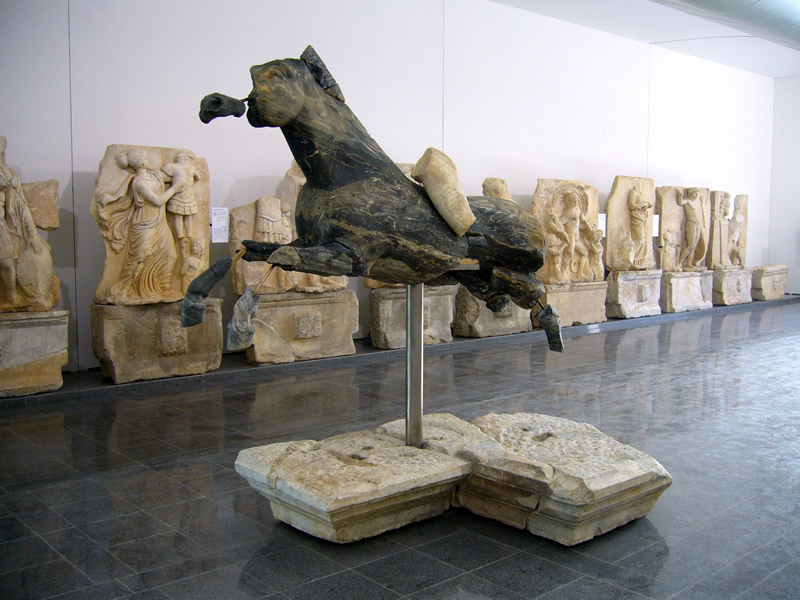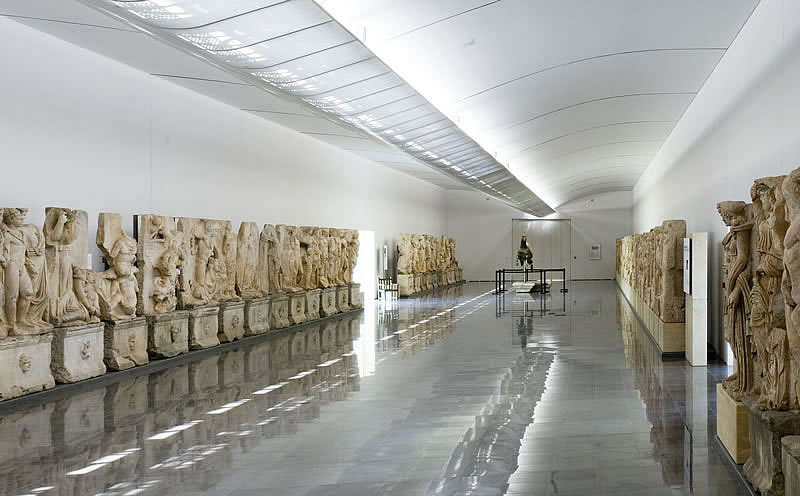Blue Horse
The galloping horse of dark blue-grey marble was found in 1970 in the Civil Basilica beside the remains of its pedestal. The monument was a daring composition that had already been restored once in antiquity. The horse wore a gilded bronze saddle cloth in the form of a feline skin attached to its back with small iron pins. It was ridden by the figure of a naked heroic youth in white marble of which only one thigh survives. From the clamp fixing in his buttock, it can be seen that the youth was falling off the horse.
The monument was placed on an L-shaped base, facing down the interior nave of the Basilica. The lower part of the base remains in situ in the Basilica. Its upper plinth is restored beneath the horse in the Aphrodisias Museum. The plinth has a cutting for a figure standing beside the horse. This was a three-figure group of horse, heroic rider, and standing figure. Its subject was probably Troilos and Achilles. The young Trojan prince Troilos was ambushed and killed by Achilles when he rode out to a fountain outside the walls of Troy. The group probably showed Achilles in a well-known composition, pulling the young Troilos from his galloping horse by his hair.
An inscribed block from a statue base built into the north city wall records a statue monument with precisely this subject: The people set up the Troilos, and the horse, and the Achilles. The block does not fit the base in the Basilica, but its dimensions are so close that the two should be connected in some way. The present base was part of a later, second display of the monument, set up when the Basilica was refurbished in the mid-fourth century. The horse was extensively repaired at this time: the front legs and parts of the mane were carved anew and in different marble. The inscribed block from the wall would then be from the original, first display. Public statues had long lives and could be moved to new settings. The monument is unique among ancient statues in representing a large galloping horse in marble. The horse seems also to have been carved in one piece, from nose to tail.
Found at: Civil Basilica






